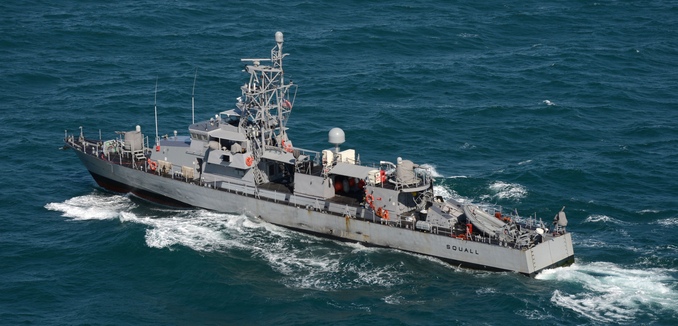An Iranian boat in the Persian Gulf sailed too close to a U.S. Navy ship for the second time this week, prompting the American vessel to fire warning shots, a U.S. official told Fox News on Thursday.
The Iranian boat came within 200 yards of the USS Squall on Wednesday before the American patrol ship fired three shots.
Earlier this week, four boats operated by Iran’s Islamic Revolutionary Guard Corps harassed the USS Nitze near the Straits of Hormuz. After they came within 300 yards of the Nitze, its crew fired flares and sounded a horn to warn the vessels away.
The Iranian ships “created a dangerous, harassing situation that could have led to further escalation, including additional defensive measures by Nitze,” an American defense official said of the earlier incident.
The U.S. Navy reported last month that in 2015, there were close to 300 encounters or “interactions” between American and Iranian naval vessels in the Persian Gulf. While most of the encounters were not considered to be harassment, the behavior of the Iranian navy was found to be less disciplined than that of other navies. Lt. Forrest Griggs, the operations officer of the USS New Orleans, explained that risks arise from the unpredictable behavior and uncertain intent of the Iranian vessels. “It’s very common for them to come up to within 300, 500 yards of us, and then they’ll turn, or parallel us and stop,” he said.
Iran’s defense minister, Hossein Dehghan, said in response to the incident with the Nitze that the Iranian boats were patrolling the coast to ensure maritime security, Iran’s semi-official Tasnim news agency reported. Iranian Supreme Leader Ayatollah Ali Khamenei also denied that the U.S. had any legitimate reason to patrol the Gulf, which contains important international shipping lanes, according to Tasnim. In a June speech, Khamenei said, “The Persian Gulf security relates to the countries of the region which have common interests, and not to the US. So, security of the Persian Gulf region should be provided by the countries of this region itself.”
[Photo: U.S. Naval Forces Central Command/U.S. Fifth Fleet / Flickr ]




